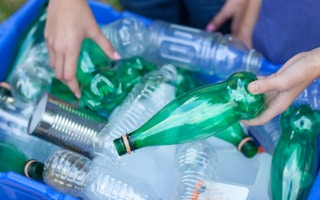More of the billions of tonnes of materials the world uses each year must be recycled and reused to keep climate change in check, researchers said on Tuesday.
Only about a tenth of the nearly 93 billion tonnes of materials utilised annually—including minerals, metals, fossil fuels and biomass—are currently put back into service, said a report by Amsterdam-based social enterprise Circle Economy.
CEO Harald Friedl told the Thomson Reuters Foundation more efficient use of those resources could help avoid overshooting the goals adopted in the 2015 Paris Agreement to limit the average rise in global temperatures to “well below” 2 degrees Celsius (3.6F), and ideally to 1.5C, above pre-industrial times.
The Circle Economy report said 62 per cent of heat-trapping emissions, excluding land use and forestry, are released during the extraction, processing and manufacturing of goods.
“
To make things circular may be painful—from changing consumer and business habits to telling countries to put up the right regulations—but it is feasible.
Harald Friedl, chief executive officer, Circle Economy
To tackle climate change, government policy has so far focused on adopting renewable energies, boosting energy efficiency, and stopping deforestation, the report said.
“It is like when you look in your closet on a morning and you only look for pants,” said Friedl by phone. “We need to change the whole system.”
The amount of materials the world uses has tripled since 1970 and could double again by 2050 if no action is taken, the United Nations estimates.
To reduce waste and emissions, economies should seek to become “circular” by reusing products, Friedl added.
“To make things circular may be painful—from changing consumer and business habits to telling countries to put up the right regulations—but it is feasible,” he said.
In Asia, fast-developing economies and urbanisation are driving huge investments in construction and infrastructure, offering chances to promote a circular economy, said Friedl.
In Europe, the report urged countries to maximise the value of existing buildings by extending their lifespan, improving energy efficiency, and finding new uses for them.
The report outlined three broad strategies to shift to a circular economy. The use of products should be maximised, such as through car-sharing or keeping vehicles for longer, it said.
Recycling and reducing waste are also key, as is using natural, low-carbon materials in construction, like bamboo and wood instead of cement, it said.
Governments should adopt taxation and spending plans that encourage a circular economy, raising levies on emissions and excessive waste production while cutting them for labour, innovation and investments, the report added.
Financial incentives that promote the overuse of natural resources, such as fossil fuels, should be abolished, it said.
“It’s a hands-on way to save the world,” said Friedl.
This story was published with permission from Thomson Reuters Foundation, the charitable arm of Thomson Reuters, that covers humanitarian news, women’s and LGBT+ rights, human trafficking, property rights, and climate change. Visit http://news.trust.org/climate.










